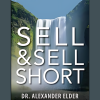-
×
 Order flow self-study training program with iMFtracker
1 × $10.00
Order flow self-study training program with iMFtracker
1 × $10.00 -
×
 The Orderflows Trade Opportunities Encyclopedia with Michael Valtos
1 × $8.00
The Orderflows Trade Opportunities Encyclopedia with Michael Valtos
1 × $8.00 -
×
 Best of the Best: Collars with Amy Meissner & Scott Ruble
1 × $15.00
Best of the Best: Collars with Amy Meissner & Scott Ruble
1 × $15.00 -
×
 The Prop Trading Code with Brannigan Barrett - Axia Futures
1 × $23.00
The Prop Trading Code with Brannigan Barrett - Axia Futures
1 × $23.00 -
×
 W. D Gann 's Square Of 9 Applied To Modern Markets with Sean Avidar - Hexatrade350
1 × $23.00
W. D Gann 's Square Of 9 Applied To Modern Markets with Sean Avidar - Hexatrade350
1 × $23.00 -
×
 The Indices Orderflow Masterclass with The Forex Scalpers
1 × $23.00
The Indices Orderflow Masterclass with The Forex Scalpers
1 × $23.00 -
×
 TradeCraft: Your Path to Peak Performance Trading By Adam Grimes
1 × $15.00
TradeCraft: Your Path to Peak Performance Trading By Adam Grimes
1 × $15.00
Sell & Sell Short with Alexander Elder
$6.00
File Size: Cooming soon!
Delivery Time: 1–12 hours
Media Type: Online Course
Content Proof: Watch Here!
You may check content proof of “Sell & Sell Short with Alexander Elder” below:

Sell & Sell Short with Alexander Elder
Introduction
Understanding the art of selling and short selling in the financial markets can be daunting. Dr. Alexander Elder, a renowned trader and author, demystifies these concepts in his book “Sell & Sell Short.” This guide explores the key principles and strategies outlined by Elder, providing insights into mastering these crucial trading techniques.
Who is Alexander Elder?
Background and Expertise
Dr. Alexander Elder is not just a trader but also a psychiatrist. His unique background provides him with an edge in understanding the psychology of trading, which he extensively covers in his works. His insights are not only technical but also delve deep into the mindset required for successful trading.
Notable Works
Elder’s books, such as “Trading for a Living” and “Come Into My Trading Room,” have become staples for traders worldwide. “Sell & Sell Short” is another gem that specifically addresses the critical aspects of selling in trading.
Understanding Selling in Trading
The Importance of Selling
Selling is as crucial as buying in trading. It determines the realization of profits and the minimization of losses. Elder emphasizes the need for a strategic approach to selling to ensure trading success.
Types of Selling
- Selling to Take Profit: Exiting a profitable position to secure gains.
- Selling to Cut Losses: Exiting a losing position to prevent further losses.
- Selling Short: Selling borrowed stocks with the intention to buy them back at a lower price.
Short Selling Explained
What is Short Selling?
Short selling involves borrowing a security and selling it, hoping to repurchase it at a lower price. This strategy is used when a trader anticipates a decline in the price of the security.
How Short Selling Works
- Borrowing Shares: The trader borrows shares from a broker.
- Selling Shares: The borrowed shares are sold at the current market price.
- Repurchasing Shares: The trader buys back the shares at a lower price.
- Returning Shares: The borrowed shares are returned to the broker, and the difference in price is the trader’s profit.
Strategies for Effective Selling
Technical Analysis
Elder stresses the importance of technical analysis in deciding when to sell. Indicators such as moving averages, RSI (Relative Strength Index), and MACD (Moving Average Convergence Divergence) are vital tools.
Setting Targets
- Profit Targets: Pre-determined levels at which to exit a trade to secure profits.
- Stop-Loss Orders: Pre-determined levels at which to exit a trade to prevent further losses.
Psychological Factors
Understanding the psychology behind trading decisions is critical. Fear and greed can cloud judgment, leading to premature selling or holding onto losing positions.
Key Takeaways from Elder’s Book
The Three Ms: Mind, Method, and Money
- Mind: The psychological aspect of trading.
- Method: The trading system or strategy.
- Money: Risk management and capital allocation.
The Importance of Discipline
Elder highlights discipline as a cornerstone of successful trading. Sticking to a well-defined trading plan and resisting emotional impulses is crucial.
Risk Management
Effective risk management strategies, such as position sizing and diversification, are emphasized to protect capital and ensure long-term success.
Practical Examples
Case Study: Successful Sell
A trader uses technical analysis to identify an overbought condition in a stock. Setting a profit target and a stop-loss, the trader exits at the peak, securing significant profits.
Case Study: Effective Short Sell
A trader anticipates a market downturn. By borrowing and selling shares, the trader capitalizes on the decline, buying back at a lower price and making a profit.
Conclusion
Mastering the art of selling and short selling, as taught by Alexander Elder, can significantly enhance trading performance. By combining technical analysis, disciplined strategies, and psychological insights, traders can navigate the complexities of the market with confidence.
FAQs
1. What is the main focus of “Sell & Sell Short” by Alexander Elder?
The book primarily focuses on strategies for selling to maximize profits and minimize losses, as well as techniques for short selling.
2. Why is short selling considered risky?
Short selling is risky because it involves the potential for unlimited losses if the stock price rises instead of falls.
3. How can technical analysis help in selling decisions?
Technical analysis provides signals and trends that help traders identify the best times to sell, ensuring better decision-making.
4. What psychological factors affect selling decisions?
Fear and greed are the primary psychological factors that can lead to premature selling or holding onto losing positions longer than advisable.
5. How does Elder’s background in psychiatry influence his trading strategies?
Elder’s understanding of human psychology allows him to offer unique insights into the emotional aspects of trading, helping traders manage their mental state effectively.
Be the first to review “Sell & Sell Short with Alexander Elder” Cancel reply
You must be logged in to post a review.
Related products
Forex Trading
Forex Trading
Forex Trading
Quantamentals – The Next Great Forefront Of Trading and Investing with Trading Markets
Forex Trading
Forex Trading
Forex Trading
Forex Trading
Forex Trading




















Reviews
There are no reviews yet.